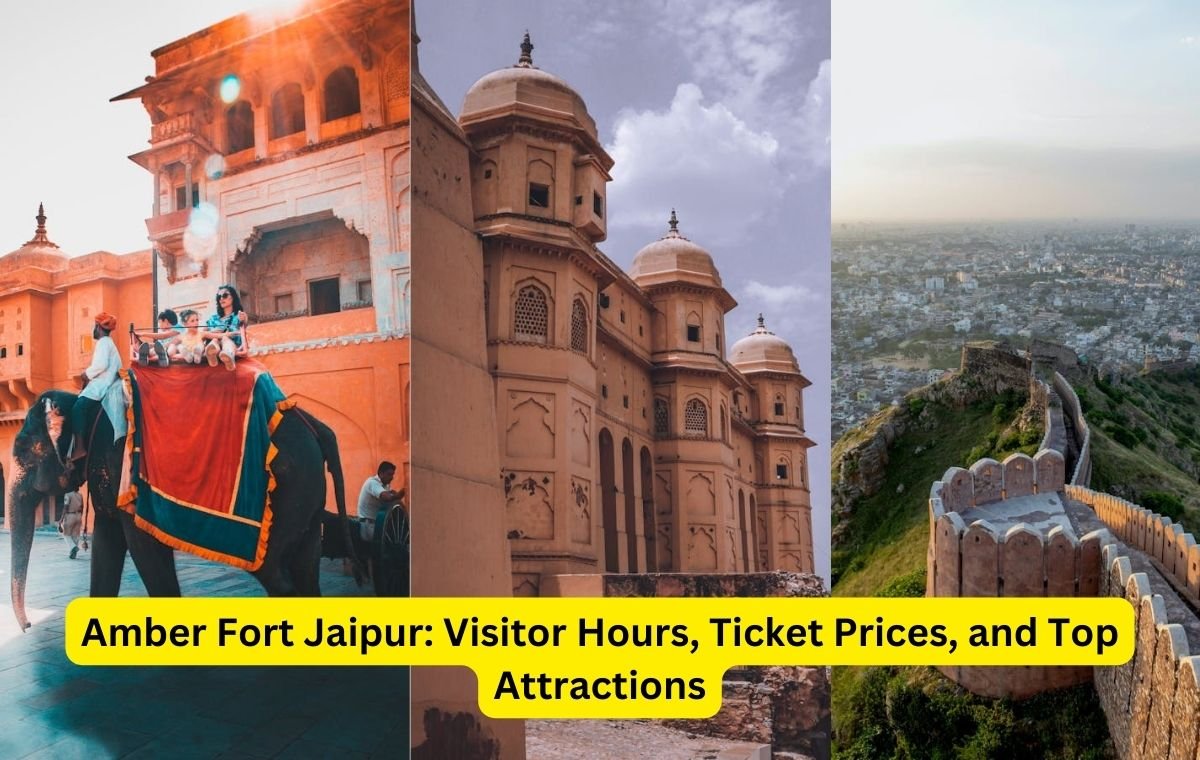Amber Fort Jaipur most famous landmarks. Nestled in the Aravalli hills, it presents a stunning fusion of Mughal and Rajput architecture. The fort offers rich history and scenic views, making it a must-visit destination. Whether you’re a fan of history, architecture, or simply want to experience Rajasthan’s royal heritage, Amber Fort has something for everyone. This guide covers essential details like timings, entry fees, and must-see attractions.
Amber Fort: Rajasthan’s Royal Heritage
Amber Fort, commissioned by Raja Man Singh I in 1592, represents Rajasthan’s grandeur. Built using red sandstone and marble, the fort’s intricate carvings and expansive courtyards reflect the opulence of the Rajput kings. Covering 988 acres, the fort also served as a strategic stronghold.
Recognized as a UNESCO World Heritage Site, Amber Fort is an architectural masterpiece that combines both Rajput and Mughal styles. Visitors can experience a glimpse of the luxurious royal lifestyle through its impressive design.
Amber fort timings for Visitors
To help you plan your visit, here are some essential details:
Location: Devisinghpura, Amer, Jaipur
Timings: 8 AM to 7 PM
Entry Point: Sun Gate (Suraj Pol)
Entry Fees:
- Foreigners: INR 550
- Foreign Students: INR 100
- Indians: INR 50
- Indian Students: INR 10
Camera Policy: Still and video cameras allowed
Commissioned by: Raja Man Singh I
Architectural Style: Mughal and Rajput
Status: UNESCO World Heritage Site
Total Area: 988 acres
Established: 1592
Material Used: Red sandstone and marble
Best Time to Visit: October to February (winter season)
Top Attractions at Amber Fort
Amber Fort is home to many captivating sections, each with its own charm. Below are the top attractions you shouldn’t miss:
- Sheesh Mahal Amber Fort (Hall of Mirrors)
Known for its mesmerizing mirror work, Sheesh Mahal features thousands of tiny mirrors that reflect light to create a magical effect. - Diwan-e-Aam (Hall of Public Audience)
This grand hall served as the space where the king addressed the public. The open area, along with intricately carved pillars, makes it an architectural marvel. - Ganesh Pol
The entrance gate to the private quarters of the Maharajas, Ganesh Pol is richly decorated with vibrant colors and carvings, making it one of the most photographed spots in the fort. - Sukh Niwas
Designed to keep the royalty cool during summer, Sukh Niwas uses a water-based cooling system to maintain a comfortable temperature inside. - Jai Mandir
Another hall known for its detailed craftsmanship, Jai Mandir is adorned with mirror mosaics and paintings, reflecting the royal luxury of the Rajput kings. - The Fort’s Tunnels
These secret tunnels, built for escaping during war, are a highlight of the fort’s strategic architecture. A small section is accessible to the public, offering a thrilling look at the fort’s defense system.
How to Make the Most of Your Visit
- Amber Fort Elephant Ride: Enjoy a traditional elephant ride up to the fort, adding a royal touch to your visit.
- Amber Fort Light and Sound Show: In the evening, Amber Fort hosts a light and sound show that narrates the fort’s history in an engaging way. It’s a must-see event if you’re staying overnight in Jaipur.
- Amber Fort Photos: Amber Fort is a paradise for photographers. From the intricate details of Sheesh Mahal to the scenic views of Maota Lake, there are countless photo opportunities.
- Guided Tours: For a deeper understanding of the fort’s history and architecture, consider hiring a guide. They can share valuable insights and stories that you might not find in guidebooks.
Best Time to Visit Amber Fort
While Amber Fort is open throughout the year, the best time to visit is during the cooler winter months, from October to February. The weather is pleasant for exploring, and Jaipur also hosts cultural festivals during this period, enhancing your experience.
Conclusion
Amber Fort is not just a historical site; it’s a journey into Rajasthan’s royal past. With its breathtaking architecture, rich history, and stunning views, it’s an essential stop for anyone visiting Jaipur. Whether you’re exploring its magnificent halls or watching the sunset from its ramparts, Amber Fort is sure to leave a lasting impression.
Make sure to plan your visit carefully, and don’t forget to bring your camera to capture the beauty of this architectural gem!
Read More: Top 10 Beautiful Holiday Destinations in India 2024
